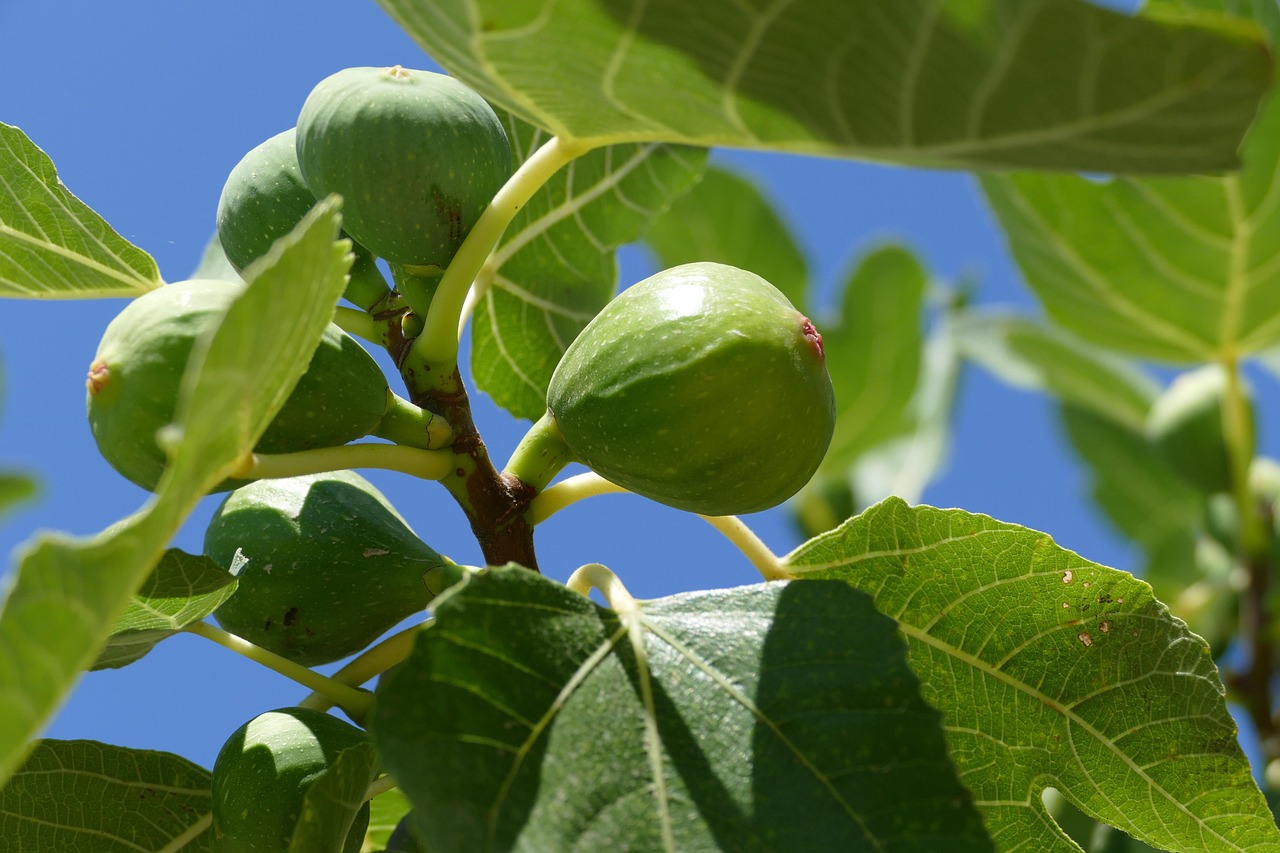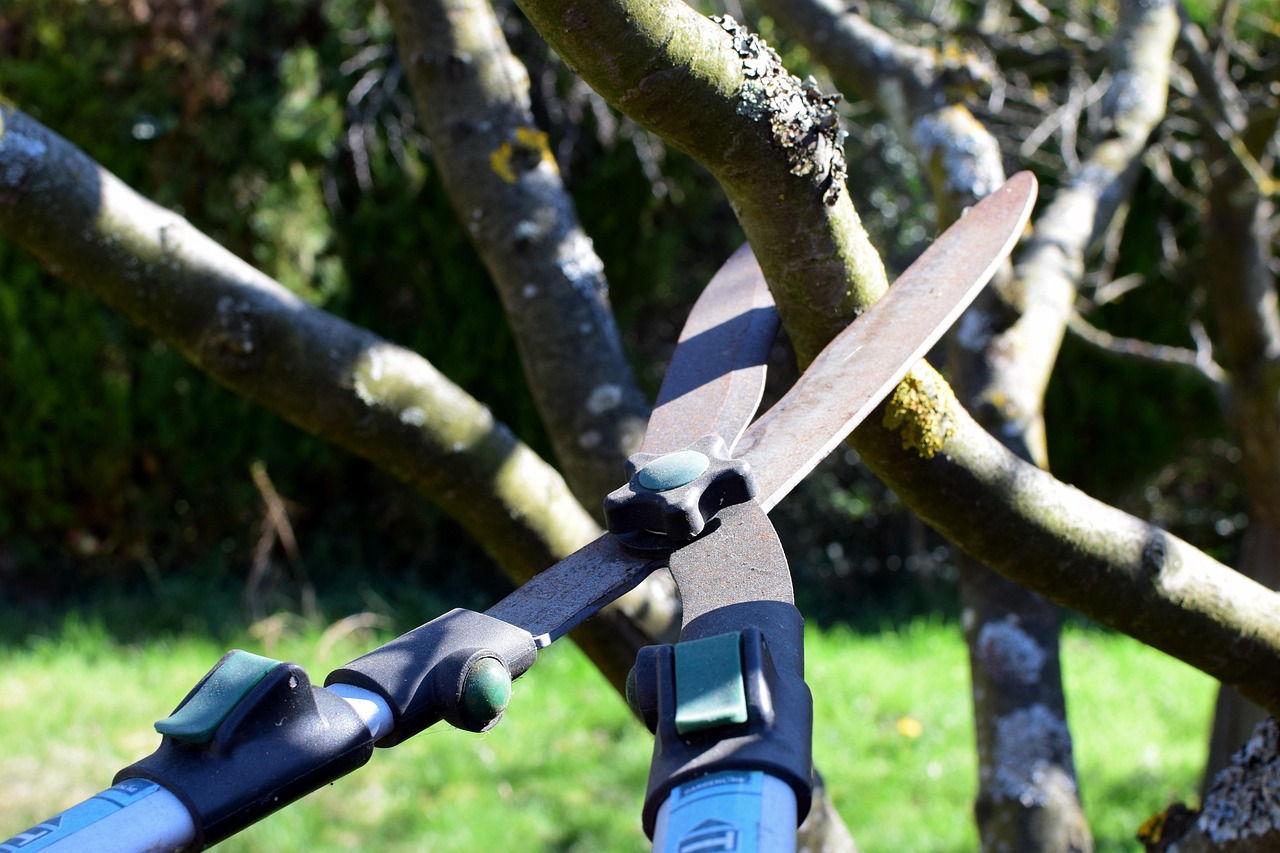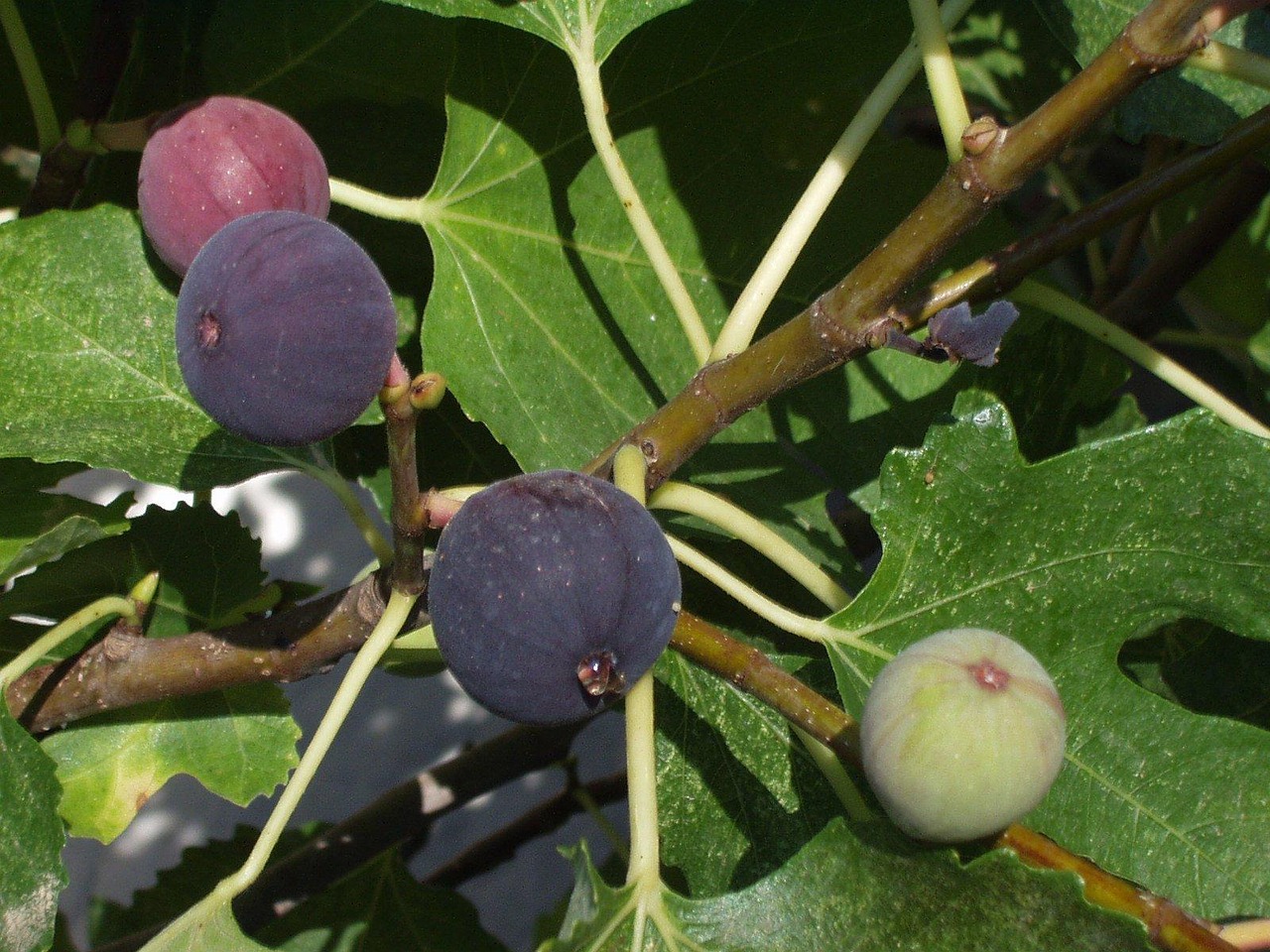Pruning fig trees in tropical greenhouse environments is essential for maintaining healthy growth and maximizing fruit production. Proper techniques improve air circulation, light penetration, and allow for better management of pests and diseases.
Understanding Fig Trees
Fig trees (Ficus carica) are popular fruit-bearing trees known for their sweet, nutritious fruits. They thrive in warm climates and can be grown successfully in tropical greenhouse environments. These conditions provide a controlled atmosphere that promotes optimal growth while protecting the tree from harsh external factors.

In tropical greenhouses, fig trees can flourish year-round. However, to ensure healthy growth and abundant fruiting, regular pruning is necessary. Pruning helps shape the tree, removes dead or diseased wood, and encourages strong new growth. Understanding the unique needs of fig trees is crucial for effective pruning.
The Importance of Pruning
Pruning fig trees serves multiple purposes that contribute to the overall health and productivity of the plant. Some key benefits include:
- Improved Air Circulation: Pruning opens up the tree’s canopy, allowing better airflow. This reduces the risk of fungal diseases.
- Enhanced Light Penetration: Removing excess foliage ensures that sunlight reaches more parts of the tree, promoting even fruit ripening.
- Increased Yield: Proper pruning can lead to more fruit production by directing energy into fewer, high-quality branches.
- Disease Management: Removing dead or diseased limbs helps prevent the spread of pests and diseases.
When to Prune Fig Trees
The timing of pruning is critical for the health of fig trees in a tropical greenhouse. Generally, the ideal time to prune is during the dormant season, which varies depending on local climate conditions. In warmer regions, this may be late winter or early spring before new growth starts. Timing can significantly influence the effectiveness of pruning efforts.

Here are some key considerations for determining when to prune your fig trees:
- Prune during the dormant season to minimize stress on the tree.
- Avoid pruning just before flowering or fruiting to prevent loss of yield.
- Monitor the tree’s growth cycle to identify the best timing based on local climate patterns.
Pruning Techniques
Several pruning techniques can be applied to fig trees to achieve optimal results. Understanding these methods allows growers to tailor their approach based on specific tree conditions and goals.
Crown Thinning
Crown thinning involves selectively removing branches to improve light penetration and air circulation within the tree’s canopy. This technique enhances overall tree health and encourages better fruit quality.

Crown Reduction
Crown reduction focuses on shortening excessively long branches to maintain a manageable tree size. This technique helps keep fig trees at a height that is easier to manage while also directing growth to more productive areas of the tree.
Heading Back
Heading back is a method where the tips of branches are cut back to promote bushier growth. This technique encourages lateral branching, helping to create a denser canopy that can support more fruit production.
Common Mistakes in Fig Tree Pruning
While pruning is beneficial, certain mistakes can hinder growth or lead to damage. Here are some common pitfalls to avoid:

- Over-Pruning: Excessive removal of branches can stress the tree and reduce its ability to produce fruit.
- Poor Timing: Pruning at the wrong time can disrupt the natural growth cycle and lead to reduced yields.
- Neglecting Disease Management: Failing to remove diseased wood can lead to further health issues within the tree.
Tools for Pruning Fig Trees
Selecting the right tools is essential for effective and efficient pruning. Here are some tools commonly used for pruning fig trees:
| Tool | Description |
|---|---|
| Hand Pruners | Ideal for small branches and precise cuts. |
| Loppers | Useful for cutting medium-sized branches with leverage. |
| Saw | Necessary for removing larger branches effectively. |
| Gloves | Protect hands from cuts and sap during pruning. |
Using sharp, clean tools will make cuts more precise and reduce the risk of infection. Regular maintenance of tools ensures they remain effective for future pruning sessions.
Understanding fig tree pruning in tropical greenhouse environments is crucial for achieving healthy growth and abundant fruit production. By implementing the right techniques and avoiding common mistakes, growers can enjoy thriving fig trees year-round.
Advanced Pruning Techniques for Fig Trees
As fig trees mature, advanced pruning techniques become essential for maintaining their health and maximizing fruit production. These methods require a deeper understanding of tree growth patterns and how to manipulate them effectively. Here are some advanced techniques that can be applied in tropical greenhouse environments.
Renewal Pruning
Renewal pruning involves cutting back older, less productive branches to encourage new growth. This technique revitalizes the tree and helps maintain a balanced structure. It is particularly beneficial for fig trees that have been neglected or have become overgrown.
To perform renewal pruning:
- Identify older branches that show signs of reduced fruiting or health.
- Cut these branches back to the base or to a healthy lateral shoot.
- Monitor the tree’s response in the following growing season.
Espalier Techniques
Espaliering is a method of training fig trees to grow flat against a support structure, such as a trellis or wall. This technique not only saves space but also enhances air circulation and sunlight exposure. Espaliered fig trees can be particularly effective in greenhouse settings where space is limited.
Steps to create an espaliered fig tree include:
- Select a sturdy support structure.
- Choose a young fig tree with flexible branches.
- Train the branches to grow horizontally by tying them to the support with soft ties.
- Regularly prune vertical shoots to maintain the desired shape.
Understanding Fig Tree Growth Patterns
To prune effectively, it is important to understand how fig trees grow. Fig trees have a unique growth pattern characterized by:
- Vegetative Growth: The period of active leaf and branch development usually occurs in spring and summer.
- Flowering and Fruiting: Fig trees produce flowers and fruit on new growth from the previous year. This typically happens in late summer to early fall.
- Dormancy: During the winter months, fig trees enter a dormant phase where growth slows significantly.
Being aware of these phases helps growers time their pruning activities appropriately, ensuring minimal disruption to the tree’s natural processes.
Pest and Disease Management During Pruning
Pruning presents an opportunity to inspect fig trees for pests and diseases. Effective management during this process is crucial for maintaining tree health. Some common pests that affect fig trees include:
- Fig Beetles: These insects can damage leaves and fruit.
- Spider Mites: They thrive in hot, dry conditions and can cause leaf discoloration.
- Scale Insects: These pests attach themselves to stems and leaves, sucking sap from the tree.
Disease issues may also arise, including:
- Root Rot: Often caused by overwatering and poor drainage.
- Powdery Mildew: A fungal disease that appears as white spots on leaves, often exacerbated by high humidity.
During pruning, inspect cut surfaces and the surrounding areas for signs of pests or diseases. If any issues are detected, appropriate treatments should be applied immediately to prevent further spread.
The Role of Fertilization in Pruning
The timing of fertilization can greatly impact how a fig tree responds to pruning. Proper nutrition supports recovery after pruning and encourages new growth. Here are some key points regarding fertilization:
- Pre-Pruning Fertilization: Applying balanced fertilizer before pruning can strengthen the tree, enhancing its ability to cope with stress.
- Post-Pruning Care: After pruning, applying fertilizer can help stimulate new growth and fruiting in the following season.
- Organic Options: Consider using organic fertilizers such as compost or well-rotted manure to promote healthy soil biology.
Watering Practices Post-Pruning
After pruning, it is essential to adjust watering practices to support the tree’s recovery. Proper hydration will help minimize stress and promote healthy regrowth. Consider the following:
- Avoid overwatering immediately after pruning, as this can lead to root rot.
- Monitor soil moisture levels closely and water only when necessary.
- Consider using mulch around the base of the tree to retain moisture while regulating soil temperature.
By implementing effective watering practices alongside proper pruning techniques, growers can enhance the overall health and productivity of their fig trees in tropical greenhouse environments.
Seasonal Considerations for Pruning Fig Trees
Understanding the seasonal changes that affect fig trees is crucial for successful pruning. Each season presents unique challenges and opportunities for growth, and knowing when to prune can significantly influence the health and productivity of the trees.
Spring Pruning
Spring is a vital time for fig trees as they begin to awaken from dormancy. Pruning in early spring allows growers to shape the tree before the new growth starts. Here are some considerations for spring pruning:
- Timing: Prune just before new buds begin to swell. This timing helps minimize stress and promotes vigorous growth.
- Focus on Shape: Remove any crossing branches and thin out crowded areas to improve air circulation.
- Remove Dead Wood: Cut back any dead or diseased branches to promote healthy new growth.
Summer Pruning
Summer pruning can be beneficial for managing tree size and encouraging fruit production. This period is characterized by active growth, and pruning during summer can help shape the tree and redirect energy. Key points include:
- Light Pruning: Engage in light pruning to remove suckers or excessive growth without stressing the tree.
- Fruit Management: Thinning fruit clusters can improve air circulation and light exposure, resulting in better fruit quality.
- Monitor Growth: Regularly check for any pests or diseases during the growing season, as summer is ideal for inspection.
Fall Pruning
Fall is typically not recommended for extensive pruning; however, some light maintenance can be done. As fig trees prepare for dormancy, it is essential to limit stress during this time. Consider the following:
- Minimal Pruning: Remove only dead or diseased wood to avoid stressing the tree before winter.
- Prepare for Dormancy: Focus on ensuring that the tree has sufficient nutrients and water before entering dormancy.
Pruning for Different Fig Varieties
Different varieties of fig trees may respond uniquely to pruning techniques. Understanding these differences can help growers tailor their approach for optimal results. Popular fig varieties include:
- Brown Turkey: This variety benefits from heavy pruning to encourage new fruiting wood. Prune in late winter or early spring.
- Celeste: Known for its sweetness, Celeste requires moderate pruning in early spring to maintain shape and promote air circulation.
- Smyrna: This variety requires careful pruning, as it fruits on last year’s growth. Prune lightly after harvest to maintain structure.
The Role of Climate in Fig Tree Pruning
The climate within a tropical greenhouse significantly influences how fig trees should be pruned. Factors such as temperature, humidity, and light levels all play a role. Here are some considerations based on climate:
Temperature Management
Tropical greenhouses generally provide a stable temperature that supports year-round growth. However, fluctuations can occur, especially during seasonal changes. When temperatures drop, consider the following:
- Avoid Late Season Pruning: Late pruning before a cold snap can expose fresh cuts to damage.
- Protecting Young Trees: Use protective coverings on young trees if a sudden temperature drop is expected after pruning.
Humidity and Watering
The high humidity levels typical in tropical greenhouses can promote fungal diseases if not managed properly. When pruning in such conditions:
- Ensure Proper Airflow: Maintain healthy airflow through strategic pruning to reduce humidity around foliage.
- Disease Prevention: Treat any cuts with fungicides if humidity levels are particularly high post-pruning.
Utilizing Technology in Pruning Practices
The integration of technology in horticulture has revolutionized how growers approach tasks such as pruning. From monitoring plant health to automating irrigation systems, technology offers numerous benefits. Here are some innovations that can assist with fig tree pruning:
- Drones: Drones equipped with cameras can provide aerial assessments of tree health, identifying areas needing attention.
- Sensors: Soil moisture sensors help determine optimal watering schedules post-pruning, ensuring that trees receive adequate hydration without overwatering.
- Mobile Apps: Several applications exist for tracking growth patterns, pest management, and reminders for seasonal pruning tasks.
| Technology | Benefit |
|---|---|
| Drones | Aerial assessments for overall health monitoring. |
| Sensors | Optimal soil moisture management. |
| Mobile Apps | Pest tracking and seasonal reminders. |
The use of technology not only enhances efficiency but also allows for better decision-making in managing fig trees throughout their growing cycle.
Maintaining Fig Tree Health Year-Round
In addition to pruning, maintaining the overall health of fig trees in tropical greenhouse environments requires attention to several factors throughout the year. Regular monitoring and care practices are essential for ensuring that the trees thrive and produce abundant fruit.
Regular Inspections
Frequent inspections of fig trees can help identify potential issues before they escalate. Growers should look for signs of pests, diseases, or nutrient deficiencies. Key areas to check include:
- Leaves: Look for discoloration, spots, or wilting, which may indicate pest infestations or disease.
- Branches: Inspect for dead or dying branches that may need to be pruned.
- Fruit Development: Monitor fruit size and quality, ensuring that they are developing as expected.
Soil Health Management
The health of the soil is fundamental for productive fig trees. Growers should focus on enhancing soil quality by:
- Regular Testing: Conduct soil tests to monitor pH and nutrient levels.
- Organic Amendments: Incorporate compost or other organic materials to improve soil structure and fertility.
- Crop Rotation: If growing multiple crops, consider rotating fig trees with other plants to prevent soil depletion.
Pest and Disease Prevention Strategies
Effective pest and disease management is crucial for the longevity of fig trees. Growers can adopt the following strategies:
- Integrated Pest Management (IPM): Utilize a combination of biological controls, cultural practices, and chemical treatments when necessary to manage pests sustainably.
- Healthy Plant Practices: Ensure proper spacing between trees to improve air circulation and reduce humidity, which can lower disease risk.
- Companion Planting: Grow companion plants that repel pests or attract beneficial insects around fig trees.
Harvesting Techniques
The harvesting of figs requires careful attention to timing and technique. Figs do not ripen off the tree, so it is essential to pick them at the right moment. Here are some tips for effective harvesting:
- Timing: Harvest figs when they are fully ripe. They should feel soft to the touch and have a slight droop at the stem end.
- Gentle Handling: Use scissors or garden shears to cut figs from the tree, avoiding any damage to the branches or remaining fruit.
- Post-Harvest Care: Handle harvested figs with care and store them in a cool, dry place to maintain freshness.
Post-Harvest Practices
After harvesting, growers should focus on post-harvest practices to ensure continued tree health:
- Remove Debris: Clear fallen fruit and leaves from around the base of the tree to prevent pest and disease buildup.
- Nutrient Boost: Apply a balanced fertilizer after harvest to support tree recovery and prepare for future growth cycles.
Utilizing Resources and Community Knowledge
Engaging with local agricultural extension services or horticultural societies can provide valuable resources for fig tree cultivation. Growers can benefit from:
- Workshops: Attend educational programs focused on fig tree care and management.
- Networking: Connect with other fig growers to share experiences, tips, and challenges.
- Online Resources: Utilize online forums and websites dedicated to horticulture for advice and best practices.
Final Thoughts
Pruning fig trees in tropical greenhouse environments is a multifaceted process that requires a thorough understanding of the trees’ growth patterns, seasonal needs, and overall health management. By implementing effective pruning techniques, monitoring tree conditions, and utilizing technological advancements, growers can ensure their fig trees remain healthy and productive throughout the year.
The combination of proper pruning, strategic fertilization, attentive watering practices, and active pest management creates a robust environment for fig trees. Additionally, understanding the unique needs of different varieties allows growers to tailor their approaches for optimal results. Through continuous learning and adaptation of best practices, fig growers can enjoy thriving trees that yield delicious fruits season after season.
Ultimately, the journey of growing fig trees is rewarding. With dedication and knowledge, anyone can cultivate these wonderful plants in tropical greenhouse environments, reaping the benefits of fresh figs right at their fingertips.
